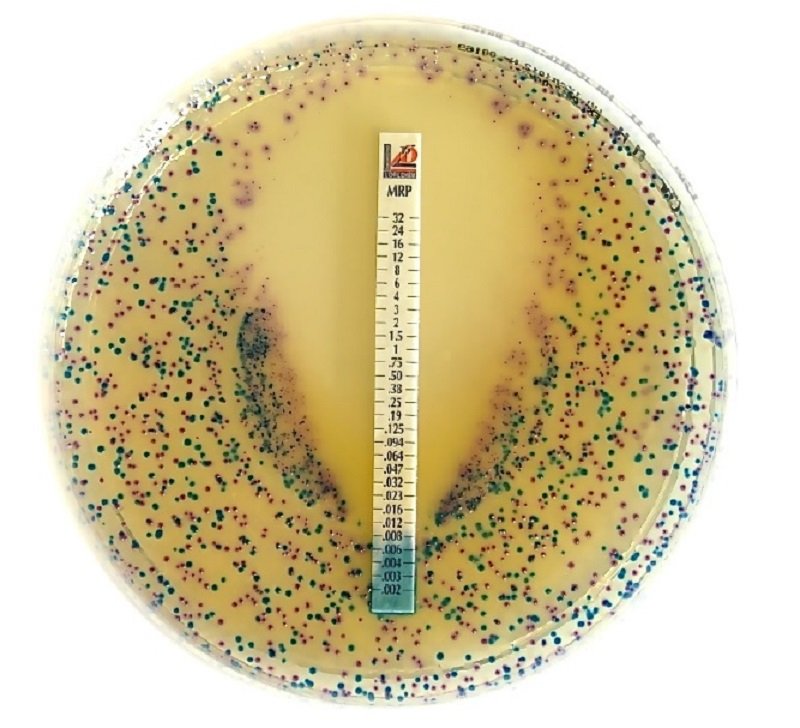MIC Test Strip

Quantitative assay for determining the Minimum Inhibitory Concentration (M.I.C.)
Â
MIC Test Strip is a quantitative assay for determining the Minimum Inhibitory Concentration (M.I.C.) of antimicrobial agents against microorganisms and for detecting the resistance mechanisms. MIC Test Strip are porous strips with special features (International Patent) that are impregnated with a predefined concentration gradient of antibiotic, across 15 two-fold dilutions of a conventional M.I.C. method.
On one side of the strip is indicated a M.I.C. scale in μg/mL and a code that identify the antimicrobial agent. For ESBL, MBL, GRD, AmpC and KPC detection, the double-sided gradient carries the appropriate diagnostic reagents. MIC Test Strip are available in a large variety of configurations. Each configuration is available in packages of 10, 30 and 100 tests.
Method Principle
When the MIC Test Strip is applied onto an inoculated agar surface, the preformed exponential gradient of antimicrobial agent is immediately transferred to the agar matrix. After 18 hours incubation or longer, a symmetrical inhibition ellipse centered along the strip is formed. The MIC is read directly from the scale in terms of μg/mL at the point where the edge of the inhibition ellipse intersects the strip MIC Test Strip. Other growth/inhibition patterns may also be seen for resistance detection methods.
Â
BIBLIOGRAPHY
• CLSI M100-S26 , 2016. Performance Standards for Antimicrobial Susceptibility Testing.
• CLSI M7-A10, 2015. Methods for Dilution Antimicrobial Susceptibility Tests for Bacteria that Grow Aerobically.
• CLSI M11-A8 Methods for Antimicrobial Susceptibility Testing of Anaerobic Bacteria.
• CLSI M11-S1 Performance Standards for Antimicrobial Susceptibility Testing of Anaerobic Bacteria.
• CLSI M27-A3. Reference Method for Broth Dilution Antifungal Susceptibility Testing of Yeasts; Approved Standard - Third Edition.
• CLSI M27-S4. Reference Method for Broth Dilution Antifungal Susceptibility Testing of Yeasts; Fourth Informational supplement.
• EUCAST. Breakpoint tables for interpretation of MICs and zone diameters Version 6.0 , January 2016.
